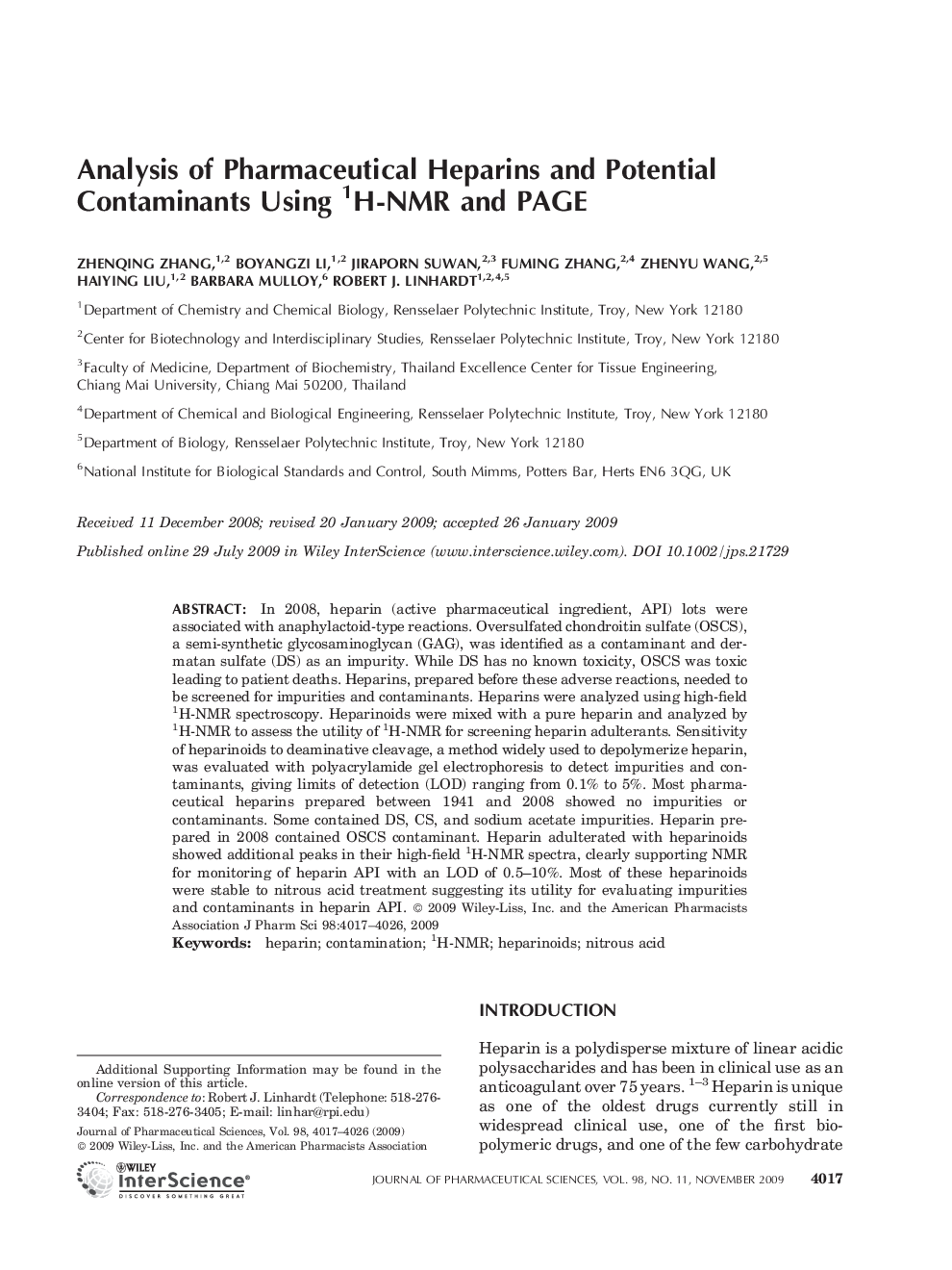| Article ID | Journal | Published Year | Pages | File Type |
|---|---|---|---|---|
| 2486937 | Journal of Pharmaceutical Sciences | 2009 | 10 Pages |
Abstract
In 2008, heparin (active pharmaceutical ingredient, API) lots were associated with anaphylactoid-type reactions. Oversulfated chondroitin sulfate (OSCS), a semi-synthetic glycosaminoglycan (GAG), was identified as a contaminant and dermatan sulfate (DS) as an impurity. While DS has no known toxicity, OSCS was toxic leading to patient deaths. Heparins, prepared before these adverse reactions, needed to be screened for impurities and contaminants. Heparins were analyzed using high-field 1H-NMR spectroscopy. Heparinoids were mixed with a pure heparin and analyzed by 1H-NMR to assess the utility of 1H-NMR for screening heparin adulterants. Sensitivity of heparinoids to deaminative cleavage, a method widely used to depolymerize heparin, was evaluated with polyacrylamide gel electrophoresis to detect impurities and contaminants, giving limits of detection (LOD) ranging from 0.1% to 5%. Most pharmaceutical heparins prepared between 1941 and 2008 showed no impurities or contaminants. Some contained DS, CS, and sodium acetate impurities. Heparin prepared in 2008 contained OSCS contaminant. Heparin adulterated with heparinoids showed additional peaks in their high-field 1H-NMR spectra, clearly supporting NMR for monitoring of heparin API with an LOD of 0.5-10%. Most of these heparinoids were stable to nitrous acid treatment suggesting its utility for evaluating impurities and contaminants in heparin API. © 2009 Wiley-Liss, Inc. and the American Pharmacists Association J Pharm Sci 98:4017-4026, 2009
Related Topics
Health Sciences
Pharmacology, Toxicology and Pharmaceutical Science
Drug Discovery
Authors
Zhenqing Zhang, Boyangzi Li, Jiraporn Suwan, Fuming Zhang, Zhenyu Wang, Haiying Liu, Barbara Mulloy, Robert J. Linhardt,
